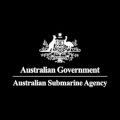Domes set to rebuild reef
 Citizen scientists are helping ecosystem recovery on Kangaroo Island.
Citizen scientists are helping ecosystem recovery on Kangaroo Island.
A new project, dubbed ‘Reef Rewind’, has seen 12 state-of-the-art, three-dimensional printed concrete domes installed along South Australia’s Kingscote foreshore.
These structures, each spanning two metres in width, are designed to revitalise local marine biodiversity by providing new habitats for various marine species, including the native oysters once prevalent around the island.
The ‘Reef Rewind’ snorkel trail, which officially opened this month, is part of the broader Passport to Recovery (P2R) program by Flinders University.
This program engages tourists and the local community in active marine and terrestrial conservation efforts.
“After working on this project for more than two years, it’s exciting to have support from the Reef Design Lab in Melbourne to establish this new feature across the main foreshore area,” says Dr Ryan Baring, a marine restoration ecologist at Flinders University who leads the P2R project.
Historically, native shellfish reefs were common around Australia but have largely disappeared due to overfishing, dredging, and other harmful coastal activities.
The Reef Rewind project represents an attempt to undo this loss and restore these critical ecosystems.
According to Dr Cassie Hoepner, the P2R project manager, the new reef is not only a conservation effort but also serves an educational purpose.
Positioned just 30 metres offshore from the popular Ozone Hotel, it provides a visual representation of larger restoration projects and aids in long-term monitoring efforts.
“It will assist in the long-term monitoring of reef restoration and the attraction of marine life to the popular tourist area,” Dr Hoepner said.
The initiative is supported by various partners including SeaLink, the Australian Government’s Inspiring Australia Citizen Science grant scheme, and other local sponsors.
Beyond the Reef Rewind, the P2R app features projects like ‘My Island Footprint’, which encourages users to assess and reduce their carbon footprint, and ‘NoBurn’, which uses AI to predict bushfire risks based on fuel loads in the area.







 Print
Print

